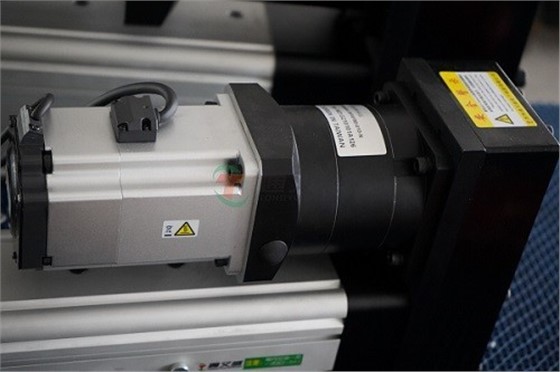High-thrust electric cylinders are devices that convert the rotational motion of a servo motor into linear motion. They are primarily composed of components such as a servo motor, screw, nut, guide rail, and housing.
During operation, the servo motor outputs rotational power, which drives the screw through a coupling. The nut on the screw, under the influence of the threads, converts the rotational motion into linear motion, thereby pushing the load connected to the nut to achieve linear reciprocating motion.
In this process, the servo motor can precisely control the rotational speed, number of rotations, and torque, thereby enabling precise control of the speed, position, and thrust of the linear motion output by the high-thrust electric cylinder.
The high-thrust electric cylinder is based on an advanced servo control system, which can accurately adjust the output power according to actual work requirements. When performing tasks, the high-thrust electric cylinder can complete precise actions at the required minimum power, avoiding the common energy waste phenomena seen in traditional pneumatic or hydraulic systems.

For example, traditional air compressors may continue to consume large amounts of electrical energy to maintain air pressure even when there is no actual load demand; hydraulic pumps, when system pressure reaches the set value, can return excess hydraulic oil through the overflow valve if there is no load action, resulting in a waste of energy. The high-thrust electric cylinder can intelligently adjust the motor's output power based on real-time changes in load, significantly reducing unnecessary electrical energy consumption.
The high-thrust electric cylinder can intelligently adjust its output speed according to the actual demands of the load.
Unlike traditional fixed-speed motors, the high-thrust electric cylinder does not need to operate at full load at all times. In some working conditions, when the load is light or rapid movement is not required, the high-thrust electric cylinder can automatically reduce its operating speed, thereby decreasing the motor's energy consumption.
For instance, in an automated storage system, when a handling cart is transporting lighter goods, the high-thrust electric cylinder can reduce its speed to save energy; conversely, when handling heavier goods or needing to respond quickly, it can promptly increase its speed to ensure work efficiency. This function of intelligently adjusting speed based on actual working conditions allows the high-thrust electric cylinder to maintain a high level of energy utilization efficiency throughout the entire working process.


